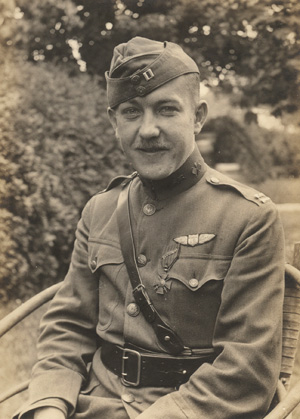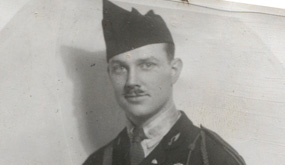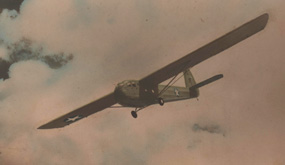 Born in Boston, Massachusetts in 1895, Charles Dolan first became interested in aviation as a young teen. He began his college studies in electrical engineering for a year, but when he tired of school, he traveled to England, and helped develop the first English-made aeroplane magneto. He later worked in Paris as an installation engineer for autopilots and helped the Sperry Gyroscope Company of London win France’s Safety of Air Prize.
Born in Boston, Massachusetts in 1895, Charles Dolan first became interested in aviation as a young teen. He began his college studies in electrical engineering for a year, but when he tired of school, he traveled to England, and helped develop the first English-made aeroplane magneto. He later worked in Paris as an installation engineer for autopilots and helped the Sperry Gyroscope Company of London win France’s Safety of Air Prize.
While in Paris, Dolan met some American Lafayette Escadrille pilots, who felt he would be an asset to their squadron. He eventually chose to join the French Foreign Legion as a first step toward that goal. After a series of flight training assignments, he finally joined the Lafayette Escadrille in May 1917.
His squadron members took an immediate liking to him, recognizing his abilities as both a pilot and an engineer. Dolan flew with the Lafayette Escadrille until February 1918, when it evolved into the U.S. 103rd Aero Pursuit Squadron, where he served as pilot, engineer, and flight commander. While originally enlisted in the Escadrille as a Sergeant, he was commissioned as a First Lieutenant with the coming of the Americans. He saw action on several fronts and participated in the St. Mihiel and Meuse Argonne offensives and was officially credited with the destruction of a Fokker fighter. He was eventually awarded the French Croix de Guerre and the Legion of Honor for his World War Service.
In 1921 he was selected by General Billy Mitchell and Colonel Horace Hickam as American Air Advisor to China, to help China develop a military air arm, and with the assistance of other American, British, and French pilots, he founded the first flying school in China, flew the first airmail flights, and established China’s first airline.
Dolan served in a variety of capacities related to the development of aviation facilities and capabilities. His contributions in government include his role in what eventually became Honolulu International Airport, as an engineer for the Air Mail Division of the U. S. Post Office, and a technical advisor to the U.S. Senate Air Safety Commission. He was equally prolific in industry, playing a role in the founding of the predecessor to Eastern Airlines and serving leadership positions in corporations to include Intercontinent Corporation, Wissahickon Tool Works, the Aero-Hydraulic Division, Chicago Pneumatic Tool Company, and the Commonwealth Aircraft Company, Kansas City Missouri.
Dolan’s aviation career had been composed of many “firsts.” He designed the first U.S. airmail stamp, installed the first insulated booths in aircraft, wrote the first Airlines Operational Manual, installed some of the first instrument landing systems, and helped write the original charter for the Civil Aeronautics Administration.
Throughout his life Carl Dolan remained a staunch defender of the Lafayette Squadron’s name, guarding it against the false membership of “ringers,” and protecting its history against all manner of assault. He was often called upon to represent the Squadron in various ceremonies. In November 1981 he traveled to France as the last surviving member of the Escadrille to commemorate the 63rd anniversary of the Armistice. He returned home to Hawaii where he died at age 86 on 31 December 1981.
Beginning in 1997, The Friends helped acquire the Dolan Collection from Dolan’s son and daughter-in-law. The collection contains military orders, papers, and flight logs pertaining to Charles Dolan's service in the Lafayette Escadrille and the United States Air Service. Also included is an assortment of awards and decorations, along with photographs of Dolan during his military and civilian careers during World War I, his time in China, and his retired life in Hawaii. Written materials contain correspondence, speeches, and manuscripts, along with oral histories of Dolan and his experiences with the Lafayette Escadrille. Topical files within the collection detail Dolan's service with the Lafayette Escadrille, his assistance to the Chinese government, and his work with the United States Congress. Completing the collection is a compilation of Dolan's patents and blueprints, artifacts, passports, printed materials, and watercolor drawings depicting the colors of the planes flown by members of the Lafayette Escadrille.









